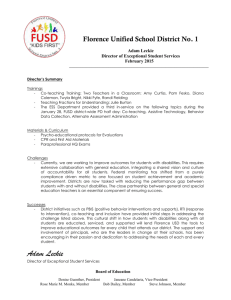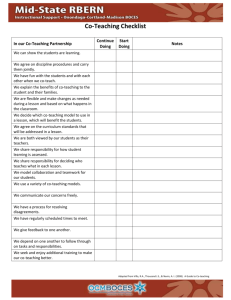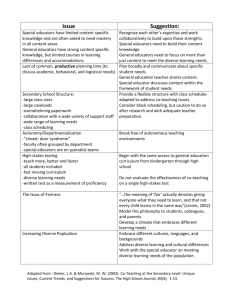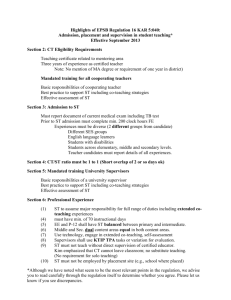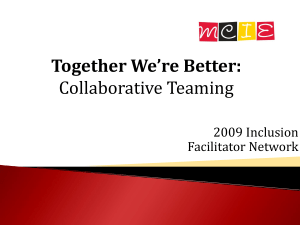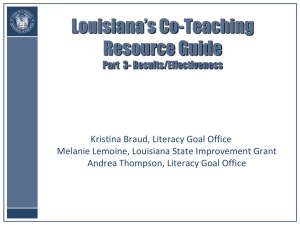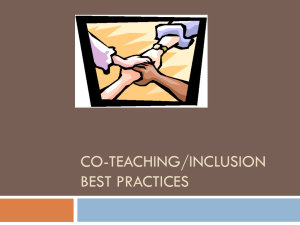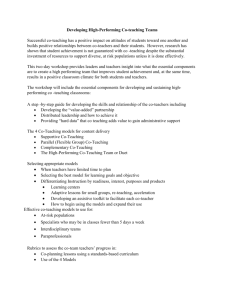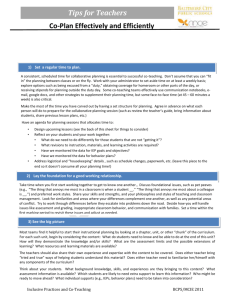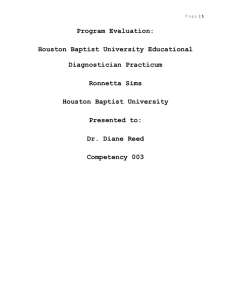Blank midterm review concepts weeks 2, 3, 4, 7, 8
advertisement
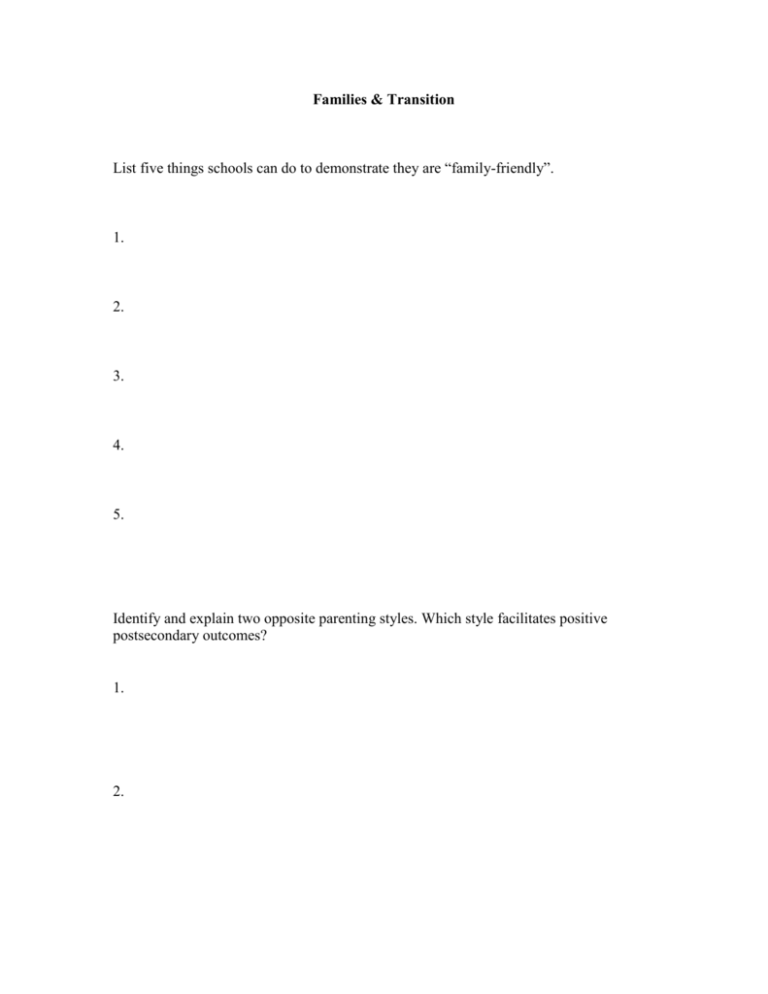
Families & Transition List five things schools can do to demonstrate they are “family-friendly”. 1. 2. 3. 4. 5. Identify and explain two opposite parenting styles. Which style facilitates positive postsecondary outcomes? 1. 2. Family Collaboration List 6 roles the special educator professional plays in family collaboration for transition. 1. 2. 3. 4. 5. Discuss 5 guidelines to remember when discussing a student’s diagnostic testing with his/her parents. 1. 2. 3. 4. Interpersonal Communication: Questions & Statements Questions are considered the most popular piece of language and a primary means of verbally soliciting information during interactions. The way a person phrases a question will greatly affect the quality of the response received. What are three opposing categories of question formats. Describe and give an example of each. 1. ______________________ and ____________________ a. b. 2. ________________________ and ____________________ a. b. 3. _________________________and _____________________ a. b. Interpersonal Communication: Conflict An individual you know uses a collaborative style when conflict arises. 1. How does the collaborative style view conflict? 2. Which parties benefit when individuals collaborate in response to conflict? 3. How does collaboration benefit individuals? 4. How can we make an environment more collaborative when we are solving problems? 5. Identify and explain another conflict style that could be used as an alternative to collaborative style. Inclusion Mimi is a student with an intellectual disability. You are considering placing her in the general education classroom for social studies. To determine this would be the least restrictive environment (LRE) for Mimi, you need to consider the criteria that can be used to determine LRE. List and explain the 4 criteria you aim to consider. 1. 2. 3. 4. What are 5 key elements of full inclusion Mimi should experience in the general education classroom? List and explain each. 1. 2. 3. 4. 5. Family Collaboration & Transition Research tells us that when emotionally responsive parents support adolescents, students attend schools with high levels of family involvement, and both school and family share responsibility for learning, adolescent outcomes are more positive. What are 8 positive outcomes for adolescents who experience these supports? 1. 2. 3. 4. 5. 6. 7. 8. Co-teaching Co-teaching offers several benefits for general educators, special educators, and students with and without disabilities. Below, identify 4 advantages to each group of individuals. Advantages to general educators 1. 2. 3. 4. Advantages to special educators 1. 2. 3. 4. Advantages to students with and without disabilities 1. 2. 3. 4. Collaboration & Inclusion The special educator plays several roles in facilitating positive inclusion classes. What are 5 roles the special educator plays in a successful inclusionary setting? 1. 2. 3. 4. 5. Identify and explain 2 tools the special educator can use with general education teachers to help them understand the characteristics and IEPs of their students with disabilities. These ideas were presented in the article by Sayenski (2009). 1. 2. Collaboration, Inclusion, & Co-Teaching List, explain, and give a specific example of how each of the 6 approaches to co-teaching might look in the classroom. 1. (name of the approach)____________________________________ a. One person ______________ while another person _______________ b. For example in math, one teacher would __________________while the other _____________________________. 2. a. b. 3. a. b. 4. a. b. 5. a. b. 6. a. b. Interpersonal Communication: Giving Feedback List 4 of the guidelines for giving effective interpersonal feedback as discussed in the lecture. 1. 2. 3. 4. Rewrite the following ineffective feedback statement incorporating the guidelines above: “Gosh, that was a really fun class! Those students are way cool - except for a couple of them, right? This was a good way to start my day. Keep it up! Later!” Co-Teaching Collaborating and planning for co-teaching can be complex because there are so many issues to consider. In the co-teaching lecture, fourteen of these issues were identified. List and briefly discuss 7 of these issues you think are most important for teachers to consider first. 1. 2. 3. 4. 5. 6. 7. As a novice teacher at your school, you are concentrating on successful collaboration with parents. What are some historical, attitudinal, or perceptual factors that make collaboration difficult for some families? 1. 2. 3. Families & Transition Why do schools need to collaborate with families? In other words, what is the rationale behind family-school collaboration? List and briefly explain 5 strategies to use when collaborating with families that were discussed in class. 1. 2. 3. 4. 5.
